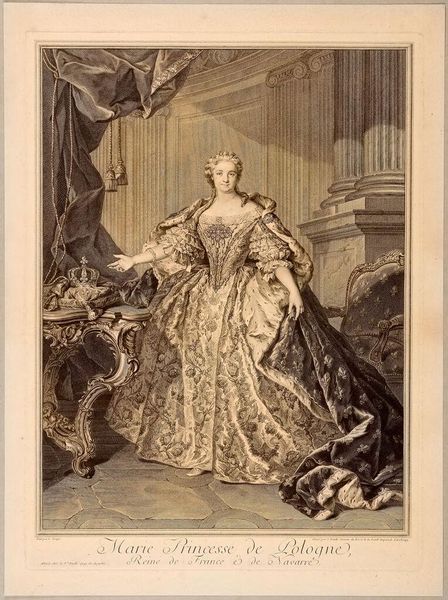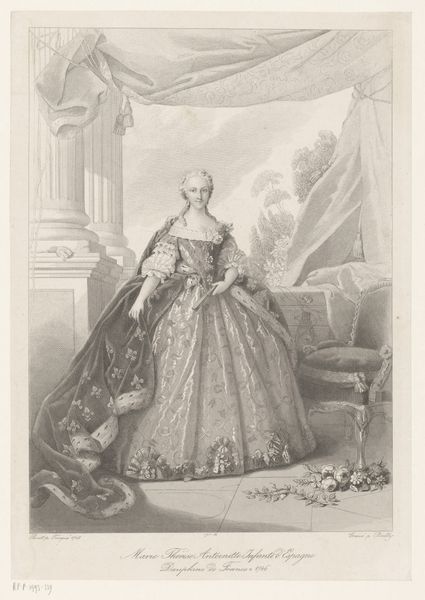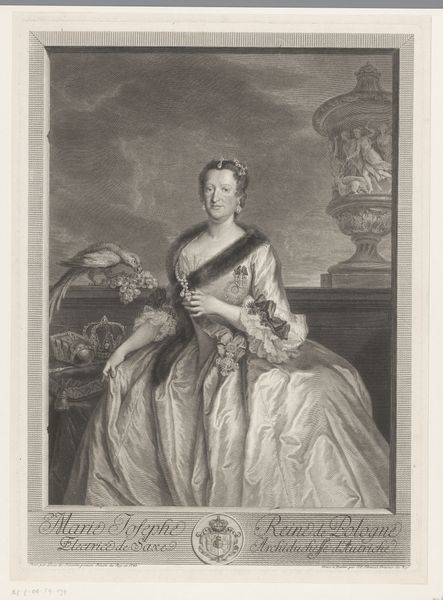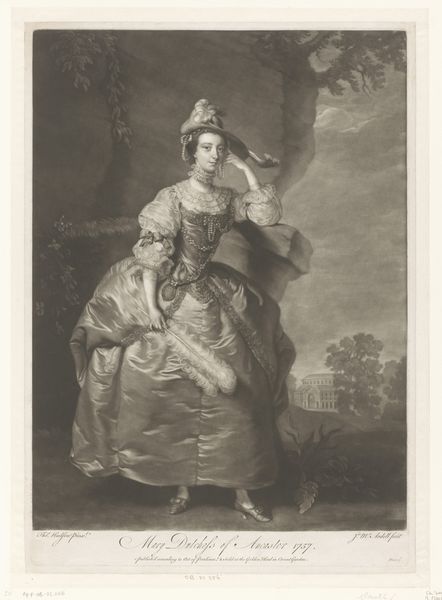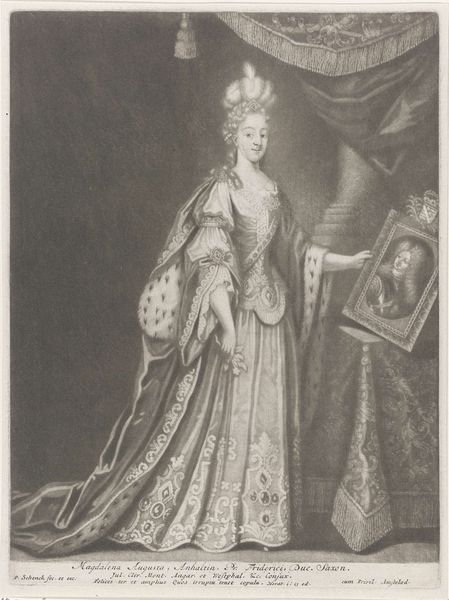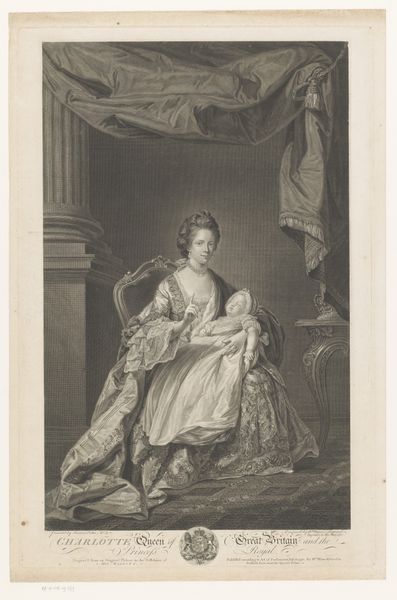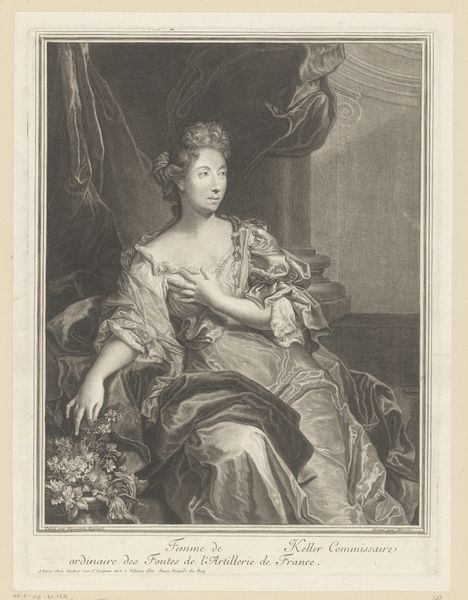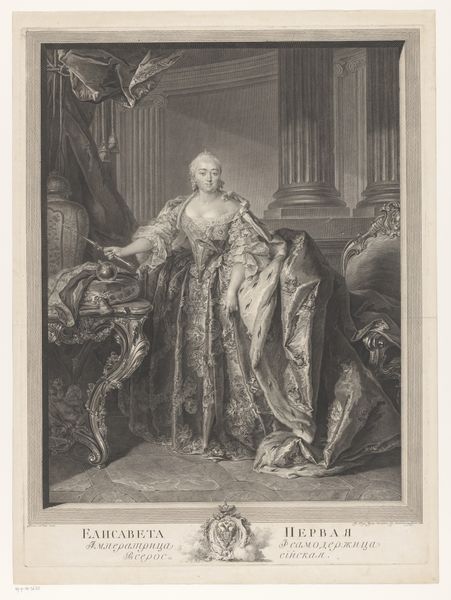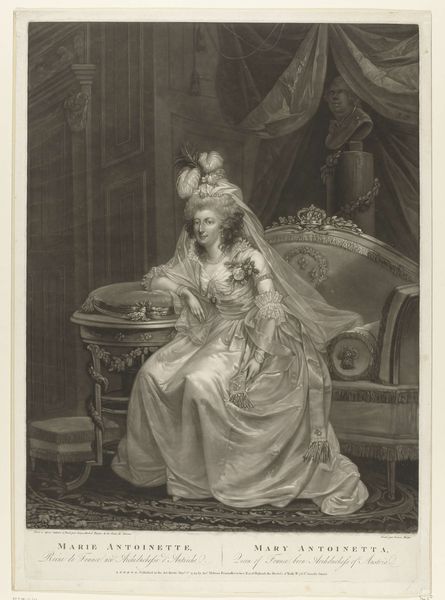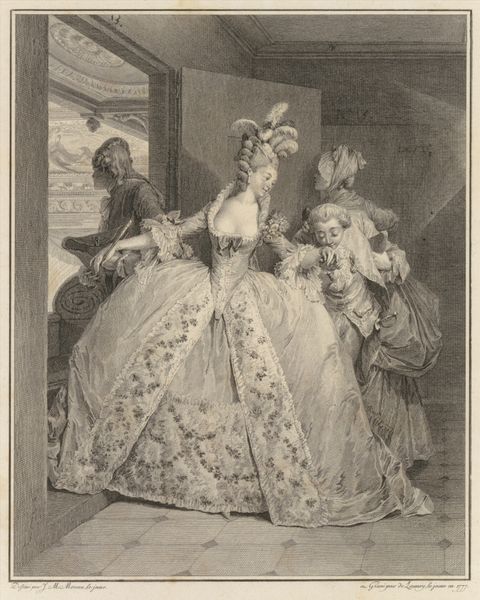
Dimensions: height 682 mm, width 504 mm
Copyright: Rijks Museum: Open Domain
This print of Maria Leszczyńska, Queen of France, was made by Jean Daullé using engraving and etching. Look closely, and you’ll see how these processes yield different visual qualities. Engraving creates clean, precise lines by cutting into a metal plate, while etching uses acid to create a more textured effect. Consider the social context embedded in this artwork. Daullé skillfully captures the Queen's luxurious gown, shimmering fabrics, and elaborate lace, all products of specialized labor and global trade networks. The very act of creating this print also speaks to the economics of image-making, intended for wide distribution. Daullé wasn't just reproducing an image. He was also participating in a system of value creation. The skilled labor involved in engraving and etching transforms base materials into objects of cultural and economic worth. This reminds us that art isn't just about aesthetics; it’s intertwined with labor, economics, and the social hierarchies of its time.
Comments
No comments
Be the first to comment and join the conversation on the ultimate creative platform.

